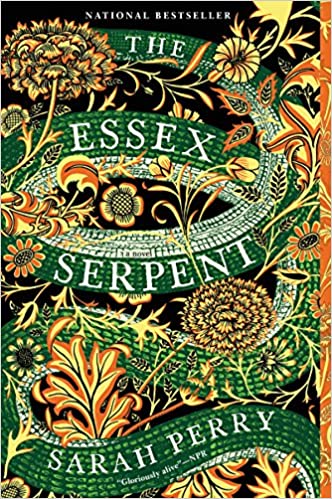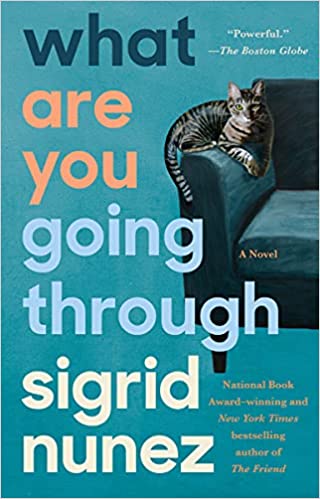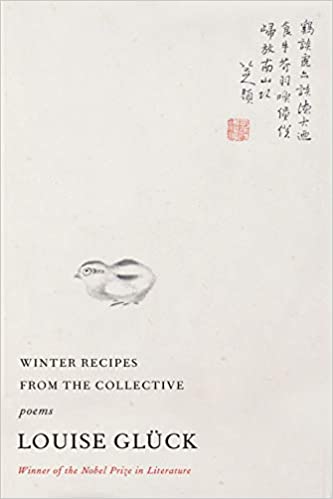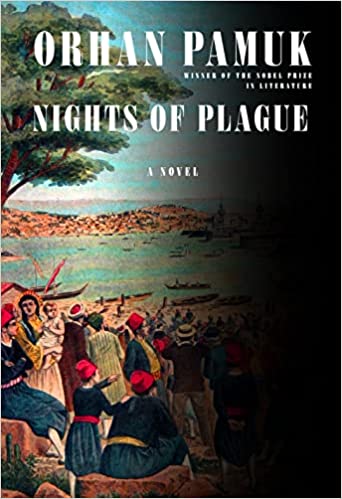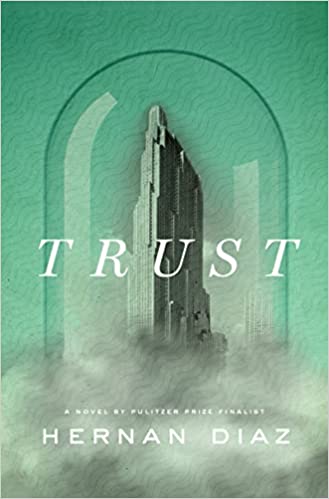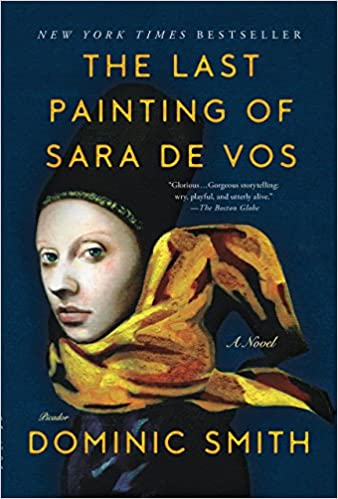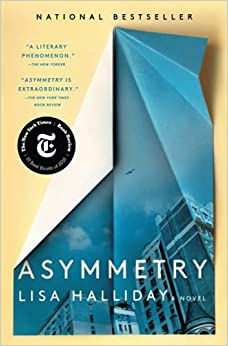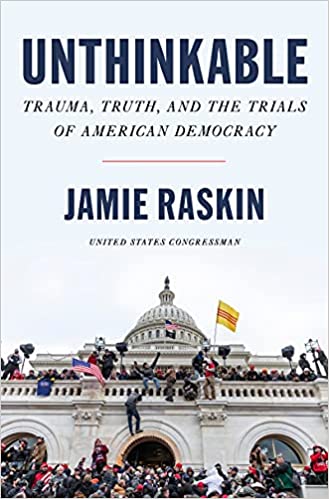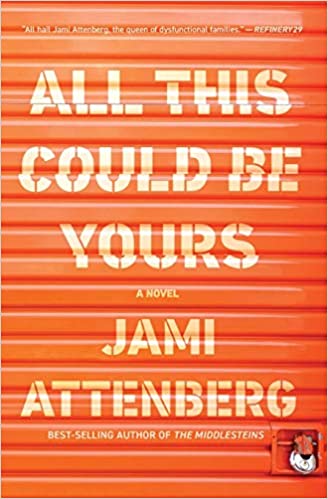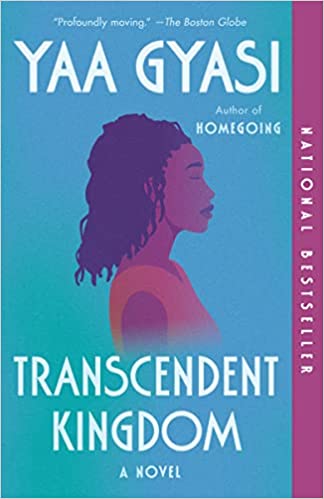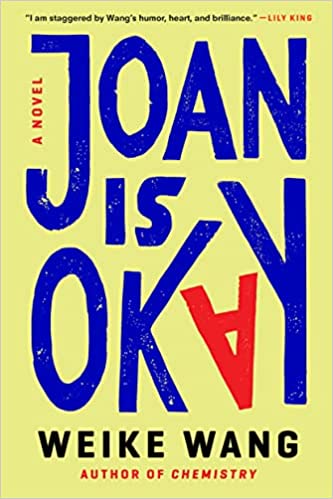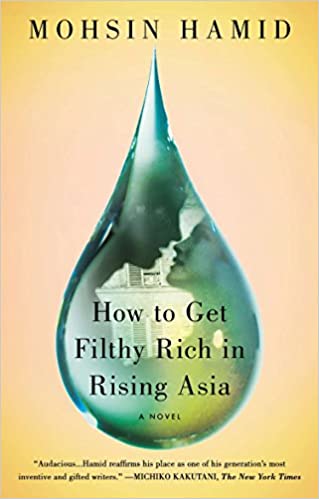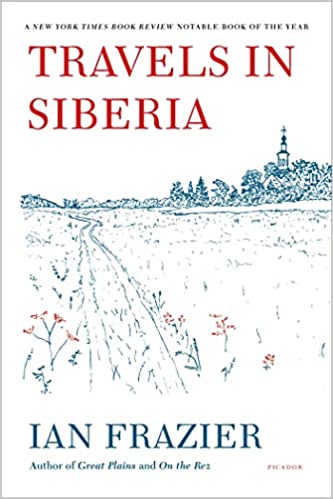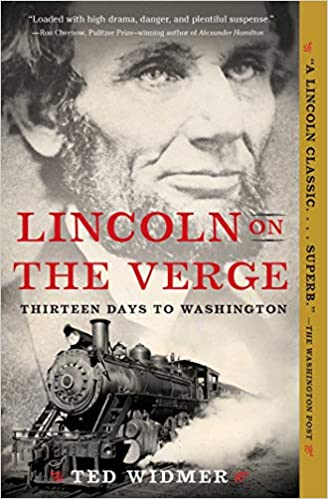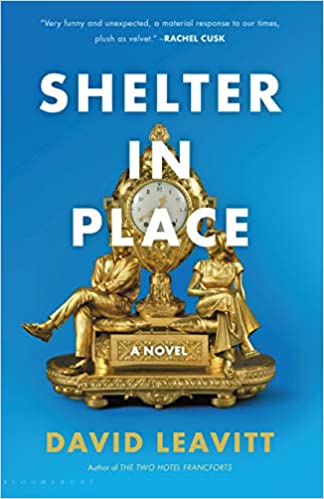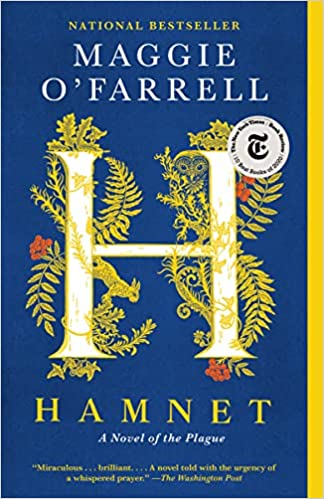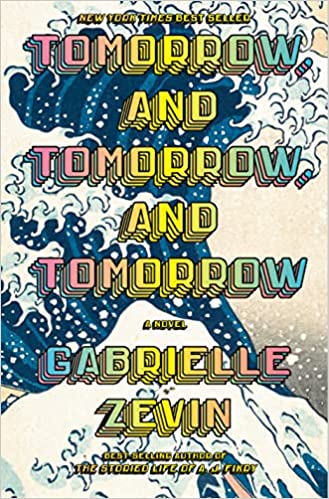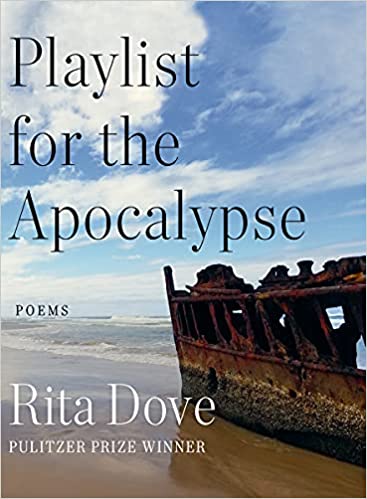What are the best books to read in January? Here’s our take on the best novels, poetry collections and nonfiction books to read in January to feel the icy clear piercingly sharp winter vibe of the month. And not just this January – any January.
recommended reads for the month of January
So many books, so little time! Reading can be one of life’s sweetest luxuries. But how to quickly find the next great volume to dive into?
To lend a hand, every month we share our Dandelion Chandelier Recommended Reads: books that we’ve personally read and loved – some brand new, and some published long ago. Selected to suit the season, we think they deserve a place on your nightstand. Or your e-reader. In your backpack. Or your carry-on bag. You get the idea.
In this edition: perfect books to read to feel a January vibe. We think these books best capture the mood and the essential spirit of the month.
what is the essential spirit of January?
We always think of January as a clean, well-lit room. It’s perhaps the time of year when many things can be seen most clearly: no leaves on the trees to block the view; no ability to hide underwater, since everything is frozen; clear lines of sight when the moonlight gleams on the snow (although happily, one can hide beneath bulky sweaters and coats until the January diet starts to show some results).

The best novels and nonfiction books to read to feel the winter vibe and mood of the month of January.
It’s a time of resolve, focus, and action. A time to envision what perfection looks like, and a moment to try to achieve it, even if falling short in the end is almost certain. A time for deeds, not words – for doing, not thinking. Our better angels are on full display, at least momentarily.
The slate is clean. The snow is still fresh, the path still untrodden. Even cynics frequently feel a glimmer of hope right about now.
what makes for the best January reading list?
We think the situation demands volumes that drive us to action, and that inspire us to strive for excellence. Challenging books, provocative books, books that make us uncomfortable. Books that educate and enlighten.
We’re thinking that a good tale of adventure – an explorer’s journey – would do nicely, even if it doesn’t end well. Also a story that unfolds in the dark of winter, but radiates light. A wintry poetry collection. And a hot romance, because why not? We’re always up for a smart sexy read, no matter what month it is.
We’ve compiled a separate list of books to read to mark Martin Luther King Jr. Day later this month that might also want to check out as you plot your reading journey this January.
perfect books to read in the month of January
Here’s our highly subjective take on the best novels, poetry collections and nonfiction books to read in January to feel its icy clear, piercingly sharp winter vibe.
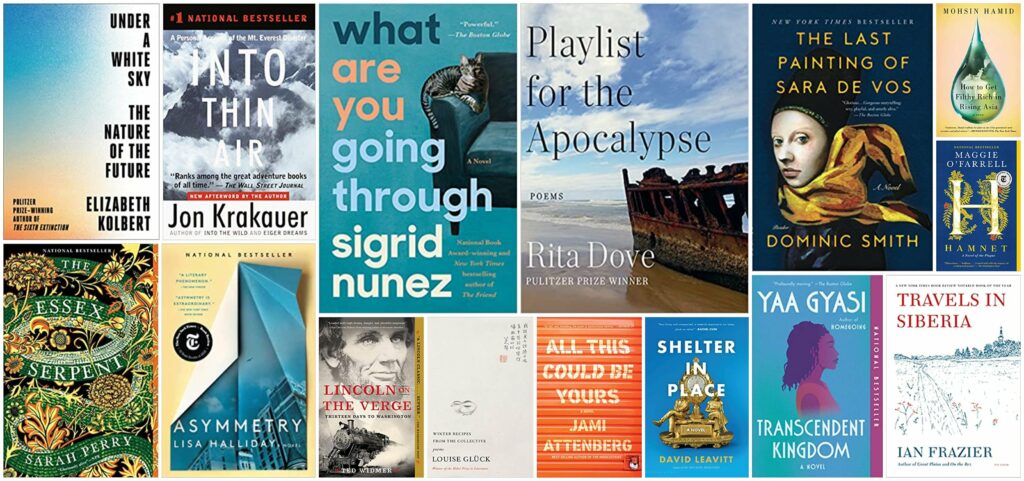
The best novels, poetry collections and nonfiction books to read to feel the winter vibe and mood of the month of January.
You can dip into these after a snowball fight; as your feet dry out from a slushy commute; by the pool; during breaks at the (virtual) sessions of CES, Davos or Sundance; in-between haute couture shows in Paris; or while the soup simmers on the stovetop.
January is the month of new beginnings – so why not begin with one of these?
1. The Essex Serpent by Sarah Perry.
We begin our list of the best novels, poetry collections and nonfiction books to read in January with The Essex Serpent, which wins our prize for “most January of all.”
This smart, sexy, and atmospheric debut novel begins, appropriately enough, on New Year’s Eve in England. A man disappears without a trace. Soon, rumors spread that he was the victim of the Essex Serpent – a frightful sea monster that has long been a part of the village’s ancient lore.
Into this milieu comes an unusually intelligent and curious young woman from London, who arrives on the scene in search of a scientific explanation for the mysterious happenings in Essex. Meanwhile, the local parish minister struggles to convince his flock that the serpent is not a punishment being wreaked on them for their past sins. When the two meet, sparks fly. And a splendid chase to get to the heart of the matter is on.
2. What Are You Going Through by Sigrid Nunez.
A phrase is repeated several times in What Are You Going Through, the latest novel from the brilliant Sigrid Nunez: This is the saddest story I have ever heard. And without question, it could also be the epitaph for this book.
It’s the story of an unnamed narrator – a woman in her mid-60’s – who is asked by a friend to be her companion as she spends the final weeks of her life dying from cancer. The friend has the intention of committing suicide at some unannounced moment – with no help from the narrator. Her role is to bear witness (and to clean up when it’s over). And yet, as the two women embark upon what another character describes as “Lucy and Ethel do euthanasia,” a tender bond develops.
As her friend sorts out the pains and disappointments of her life, so does our narrator. For example, the narrator’s ex has become a Jeremiah of climate change, offering no hope for the planet’s survival and falling out with his own son because he insists on having multiple children (after all, what’s the point?). The fragility and beauty of life is never more apparent than when a loved one is approaching its end.
This is a gorgeously-written book surrounded by a fog of sadness and grief. And yet. Keep your eye on the small grey cat from the book’s cover. The tiny feline shares an unforgettable story, among many that are told over the course of this novel. Ultimately, Nunez proves that – as the narrator notes at one point – “even a sad story, when well told, can lift us up.”
3. Winter Recipes from the Collective: Poems by Louise Glück.
The poems in the poetry collection Winter Recipes from the Collective, written by a winner of the Nobel Prize in Literature, illuminate the icy depths of winter – in the natural world, and also in the winter of one’s life.
The various poems “contain a whole lifetime: the inconceivable gifts and losses of old age; the little princesses rattling in the back of a car. An abandoned passport; the ingredients of an invigorating winter sandwich. A sister’s death. And throughout it al, the joyful presence of the sun, its brightness measured by the darkness it casts.”
4. Nights of Plague by Orhan Pamuk.
Another winner of the Nobel Prize in Literature returns with Nights of Plague, a brilliant novel that imagines a previously unknown disease ravaging a fictional island in the Ottoman Empire called Mingheria in 1901. Half of the island’s population is Muslim, and the other half Greek Christians. Tensions are historically already high between the two – as are the mistrust between local journalists and the government. When a deadly plague arrives, the enmity between these parties boils over with deadly results.
Where did this disease come from? Are the Muslim pilgrims returning from the hajj to blame? Or is it the Greek merchant vessels plying the waters of the Mediterranean? Do Western scientific discoveries in treating cholera shed light on how to fight this new plague (which seems to originate in China or India)? Is quarantine the only solution, despite the economic cost and the violations of religious faith that it requires? What is prudent and what is cruel when the choices of one individual can have catastrophic consequences for the entire community?
Does any of this sound familiar?
Reading this novel in the wake of the global COVID-19 pandemic is startling. Riveting. And highly provocative. The weight of fear and mistrust toward “the Other;” the terrible acts of the past committed by the state; grudges long buried but still closely held; the overconfidence of deeply flawed political and religious leaders. The widely-held suspicion of scientists and their motives. Scapegoating of the weak and the poor. The historical machinations of the Great Powers against the needs and interests of their colonies. The conflicting pull between making a living and following the measures it may take to stay alive. They’re all here.
Reading this brilliantly crafted novel feels like reading a news report from New York City in the year 2020. Given the recent global headlines, it’s clear that we still have no clear answers to many of these urgent questions. Making this novel a must-read that is pitch-perfect and necessary for this particular moment.
5. Trust by Hernan Diaz.
In his second novel, Trust, the acclaimed author turns his eye to Manhattan during the Roaring 20’s and the Great Depression. Benjamin and Helen Rask have risen to the height of wealth, though rumors circulate about the circumstances of their fortune. A story within a story, the Rask mystery is the center of a successful 1938 novel, but the account everyone in New York seems to know isn’t the only version of their story. A frigid tale about greed and indifference told four ways, this is a dark wintry read for a cold season.
6. The Last Painting of Sara de Vos by Dominic Smith.
The Last Painting of Sara de Vos is a tale that leaps in time from Holland in the 1600’s, to Manhattan in the 1950’s, and finally to Sydney in the early 2000’s. We’re surrounded by wintry weather and cold cruelty of many types in a tale that has special resonance during the current conversations about the challenges that talented women face making their way in the world.
The fictional De Vos is a female painter reduced to extreme poverty by the sexist norms of her society. Ellie Shipley is another talented female artist who struggles in much the same way in the modern era.
Powerful men — and weak ones — have agency, but none of these women do. That is, until they discover and begin to exert their own power. In the winter darkness, their ferocity shines like a beacon with the promise of brighter days ahead. If not for them, then for those who follow.
7. Asymmetry by Lisa Halliday.
We don’t mean to gush, but we love Asymmetry. The format is inventive and clever (in 2018, it was listed by the New York Times as one of the essential books written by women that are transforming how we think about narrative fiction). The various voices are lights-out smart; the plot is emotionally riveting; and you’ll find yourself thinking about it long after you finish.
The story begins with a romance between two New Yorkers who meet cute in Central Park. But this gorgeous novel has a lot more on its mind than a spring romance. Or to be precise, a classic May-December romance. It’s about power, and empathy, and family, and character. And it contains worlds.
8. Unthinkable: Trauma, Truth, and the Trials of American Democracy by Jamie Raskin.
We have to add a disclosure as we declare this work one of the best nonfiction books to read in the month of January. We’ve personally known the author, Congressman Jamie Raskin, since we were fellow students at Harvard Law School. A groomsman at our wedding, he and his brilliant family have long been friends and role models for us. So it is with both pride and sorrow that we reflect on the heartbreaking story behind his searing new memoir, Unthinkable.
This book unfolds largely in the month of January, making this a perfect time to read (or re-read) it and reflect on the legacy of January 6, 2021.
In just 45 days at the start of 2021, Congressman Raskin confronted three unimaginable events that might have broken other people. The unspeakable loss of his son to suicide. The violent insurrection in our nation’s Capitol on January 6. And the impeachment effort to hold the former President accountable for inciting the criminal acts. Heartbreak, anger, admiration and awe – you’ll feel this story deep in your bones and in your heart – and admire the Congressman’s fortitude and courage – long after the last page is turned.
9. All This Could be Yours by Jami Attenberg.
Sometimes when one person dies, it serves as a moment of rebirth for many of the people around them. And so it is in All This Could Be Yours, a wintry and brilliantly-written novel, which happens to take place in a steamy hot summer in New Orleans.
The patriarch of a family lies dying in a hospital room. Swirling around him and crisscrossing the city are his soon-to-be-widow, his daughter and his daughter-in-law. His only son refuses to make the journey to keep watch. Through their eyes, we gradually begin to see the impact that a very bad man can have on his family for multiple generations. And how that family might begin to recover and rebuild once the weight of his cruelty is finally lifted.
Like the deep winter, this is a story of loss and sorrow. But even in the coldest depths, there’s some genuine warmth – and sparks and glimmers of hope.
10. Transcendent Kingdom by Yaa Gyasi.
The author of the widely-acclaimed debut novel Homegoing returns with Transcendent Kingdom, the story of a family of African immigrants from Ghana who settle in Huntsville, Alabama in the 1970’s. Race and poverty are the twin burdens that threaten to sink this small black family, and a local white evangelical church is the raft to which the matriarch chooses to cling.
The daughter and baby of the family is the earnest and brilliant (and aptly-named) Gifty, who narrates from her perch in a graduate school research lab at Stanford. After attending Harvard College, she has escaped the oppressive atmosphere of her childhood home – but not the grief and anguish that she’s still suffering in the wake of the opioid overdose death of her beloved older brother.
Her entire life has been shaped by the seemingly irreconcilable demands of religion and science. This beautifully written, mournful and illuminating story is an account of her quest to reconcile those two magnetic poles. To understand and overcome the guilt and shame of her quixotic attempt to save her brother. To find peace with her mother – who at age 70 remains both fearsome and frail.
Is transcendence under such circumstances actually possible? We ache for this young women, so full of promise and pain. This is a timely and timeless meditation on reason, faith and the meaning of home.
11. Joan Is Okay by Weike Wang.
The author of Chemistry returns with a new novel about a young smart woman in extremis. It can best be described as an anti-rom com, definitely not meet-cute, young-single-woman-in-the-city story, even though many of the classic elements for such a tale are present.
Reminiscent of Fleishman Is in Trouble and Goodbye, Vitamin, Joan is Okay follows the titular character, who is an I.C.U. doctor at a New York City hospital in the waning months of 2019. While she genuinely loves her work and spends so many hours at the hospital that H.R. forces her to take a short sabbatical against her will, Joan’s her sister-in-law questions her status as “a real woman,” given that Joan has no children of her own. Her brother spends all of his energy trying to convince her to move out of the city to Greenwich, Connecticut, where she can make more money in private practice. And her doorman is annoyingly persistent in encouraging her to marry the nice single guy who lives across the hall.
Meanwhile, Joan is nearly overwhelmed with grief over the recent death of her father. And by trying to care for her widowed mother, who is both needy, independent, doting and highly critical. A paean to the importance of living on your own terms, this slim volume contains worlds.
12. How to Get Filthy Rich in Rising Asia by Moshin Hamid.
How to Get Filthy Rich in Rising Asia is a novel of one man’s life told in one decade per chapter. Hamid has given us an excellent and moving meditation on one specific individual who becomes universally relevant: the losses, the choices, the triumphs, and the search for meaning are all described in spare, wrenching, unsentimental prose. It will cause you to consider what legacy you’re trying to leave and remind you that time is precious and goes past very quickly. We read this novel the year it was first published on a long plane ride to Hong Kong, and it was one of the best books we read all year.
13. Travels in Siberia by Ian Frazier.
Travels in Siberia is a fantastically engaging nonfiction travelogue about one of the coldest and most desolate places on earth. Writer Ian Frazier made a journey across the entirety of Siberia and he returns to tell a fascinating and illuminating series of true stories about the region’s history and current occupants.
Part road trip, part sociological treatise, we originally read excerpts of this book in The New Yorker. It was a reasonably lengthy two-part series in the magazine, and we couldn’t put it down – even though if you had asked us, we would have said that we had very little interest in becoming immersed in Siberia. Such is the talent of a great writer: we’ll follow him anywhere, and feel genuinely sad when the journey has to come to an end.
14. Lincoln on the Verge: Thirteen Days to Washington by Ted Widmer.
If you have not joined the ranks of the those obsessed with and steeped in the lore of Abraham Lincoln, be warned: this book will take you there. We think its the perfect nonfiction book to read in January. Lincoln on the Verge is a fascinating and humane portrait of Lincoln before he took office. Specifically, this is the story of his 13-day train ride with his wife, children, close advisors and friends as he made his way East from Illinois to Washington DC. for his first inauguration.
Before he boards the train, there’s high suspense over whether his election will even be certified. Once it is, it becomes clear that this is an inauguration that Southerners – who have already named Jefferson Davis as their President – fully intend to prevent by any means necessary. A female spy learns of a murderous plot to assassinate Lincoln as the train passes through Baltimore.
Sure, we know how it ends. But learning the details and the constant threat of violence that Lincoln faced – and hearing of the grace and wisdom he demonstrated under such pressure – will make you revere him in a way that perhaps you hadn’t before. Lincoln’s Presidency was even harder than most Americans know – and this pivotal moment for the salvation of our democracy came perilously close to not happening. It’s a lesson we forget at our peril.
15. Into Thin Air: A Personal Account of the Mt. Everest Disaster by Jon Krakauer.
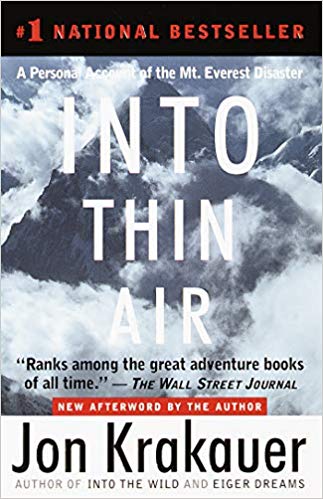
The best novels, poetry collections and non-fiction books to read to feel the winter vibe of January.
Into Thin Air is a true-life narrative of the deadliest season in the history of Mt. Everest. A nonfiction book that reads like a swift-moving and well-plotted novel, it’s perfect to read in January, and has become a classic of the genre.
The author reached the summit of Everest in the early afternoon of May 10, 1996, sleep-deprived and suffering from oxygen depletion. As he began his long, dangerous descent, twenty other climbers pushed doggedly toward the top.
Soon after, a rogue storm brought 70-knot winds and blinding snow, and five men were lost to the mountain, including two highly experienced climbers. Krakauer takes a sharp and self-critical look at the combination of ambition, hubris and thirst for adventure that has compelled so many to throw caution to the wind and repeatedly subject themselves to hardship and deadly risk on the roof of the world. You’ll feel the chill of this tragic tale deep in your bones.
16. Shelter in Place by David Leavitt.
As the delicious novel Shelter in Place opens, it’s January 2017, and the shock and fear of the results of the 2016 Presidential election are still very much present – raw, even – within the charmed circle inhabited by Eva, her husband, and their well-off and highly literate friends. Eva refuses to say “his” name aloud (the one that starts with a “T”). And after a visit to Italy over Inauguration Weekend, she decides that the only rational course of action is to buy an apartment in Venice with a view of the Grand Canal. You know. Just in case.
Her decision to flee the country sets off a chain of events that will ultimately transform the lives of almost everyone around her. This is a quick, breezy read full of beautiful interiors, witty dinner conversations and knowing asides. If the names Rachel Maddow, Lydia Davis and Jean Rhys mean a great deal to you, then these are your people.
Underneath the shiny surface of this tale, though, lies a beating heart. A sweet romance. And a series of profound moral questions. Like: in a democracy, if your side loses, is it moral to immediately leave the country? What if you didn’t even bother to vote in the election? When do events in the public sphere legitimately drive us to profound changes in our personal lives? And what happens when change inevitably comes in the public space – does that mean we just hit “rewind” in our personal lives?
After finishing this book, we found ourselves reflecting on the meaning of courage. And loyalty. Agency. Also the importance of finding the perfect pillow to match our damask drapes. Even having finished this book some time ago, we’re still not sure where we are on the matter of whether serving a whole fish at a dinner party is really a good idea. But at least we have a starting point to think about it.
17. Hamnet by Maggie O’Farrell.
Having experienced life in a world where the coronavirus pandemic continues to wreak havoc like a movie monster that refuses to die, this piercing historical novel set during the Black Plague in 1580’s England has special resonance.
In Hamnet, we meet Agnes, who has special gifts as a healer. When she settles into domestic life with her husband in Stratford-upon-Avon, she is known as a wonderful mother and also as the “secret weapon” of her playwright husband, whose career in the theater in London is just beginning to take off.
Then tragedy strikes. And when they lose their beloved son Hamnet, will they also lose their marriage and any hope of happiness in this life? It cuts very close to the bone, and yet the prose is so lush and the emotions so true that even in the depths of 2020, this was an essential read.
BUY NOW
18. Under a White Sky: The Nature of the Future by Elizabeth Kolbert.
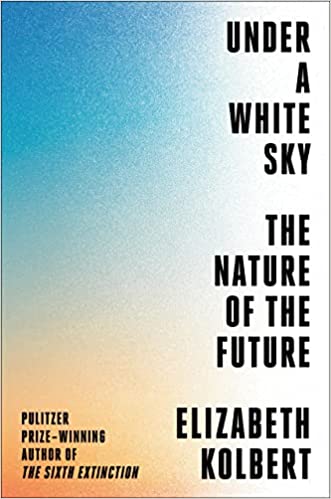
The best novels, poetry collections and non-fiction books to read to feel the winter vibe of January.
Another of our recommended nonfiction books to read in January deals with what a new year might look several years hence, when the ravages of global warming have taken full effect. In Under a White Sky, the award-winning journalist, staff writer for The New Yorker and author of The Sixth Extinction shares a provocative take on how the scientists of the world are in a race against time, trying to stave off the worst effects of climate change. She examines how the very sorts of human interventions in the natural world that have imperiled our planet increasingly appear to be the only hope for its salvation.
19. Tomorrow, and Tomorrow and Tomorrow by Gabrielle Zevin.
Tomorrow, and Tomorrow and Tomorrow is a multi- layered and inventive novel set in the world of video game development. After years apart, two childhood friends reunite in Cambridge, Mass and set out to create a new game. Their project succeeds beyond their wildest expectations. But as their fame and influence grow, and alliances and relationships morph and change, their friendship is frayed to the breaking point.
This is a fanciful novel about made-up worlds and unlimited second chances, balanced by a heartfelt knowledge of the heavy weight of grief and loss in real life. Whether or not you’re a gamer, you’ll see something of yourself and your life in this tale, in which everyone at one point or another fervently wishes that the real world was more like a video game.
20. Playlist for the Apocalypse: Poems by Rita Dove.
Playlist for the Apocalypse is a perfect poetry collection to read this month, if you want books that will allow you to fully feel the crisp winter clarity of January. In her first volume of new poems in twelve years, the former Poet Laureate of the United States ranges from meditations on mortality to “acerbic observations on injustice” in a volume that has been declared by several critics to be her best yet.
In it, Dove reveals for the first time her struggles with MS. The specter of illness and pain hovers over many of these poems. And yet the spirit of the collection is defiant. And life-affirming. You could do much worse than to make this your first new read of the new year.
best novels and nonfiction books to read in January
That’s our take on the best novels, poetry collections and nonfiction books to read in January to feel the quintessential winter vibe and the mood of the month. Books to accompany you as step across the threshold into a new year: the best books to read to feel the vibe and mood of the month of January.
Rilke wrote: And now we welcome the new year, full of things that have never been. May one (or more) of these books lead you toward new discoveries, new adventures, and deeper understanding. Happy New Year, dear reader.

